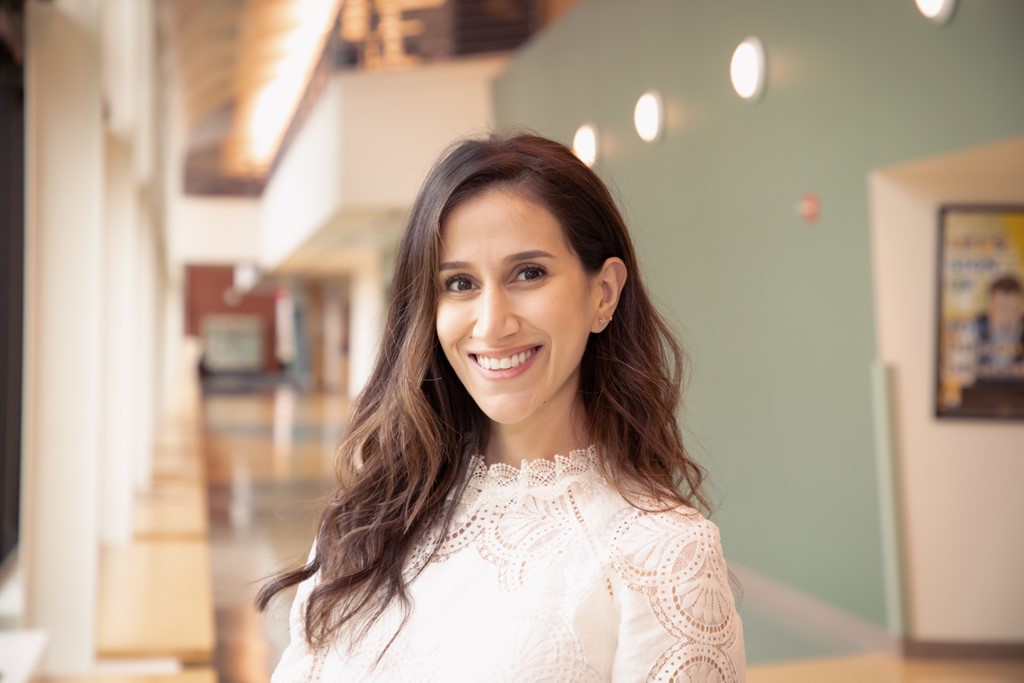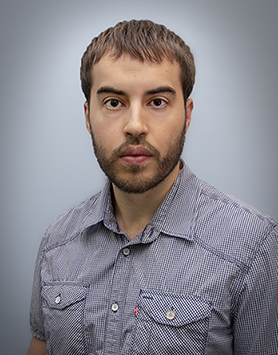CECS Assistant Professor Research Talk

Estimating and contextualizing riders' emotions in self-driving vehicles
Areen Alsaid, IMSE
Speaker Bio
Dr. Areen Alsaid is an assistant professor in the IMSE department at UM-Dearborn and the director of the SET lab. Prior to joining UM-Dearborn, Areen worked at Ford Motor Company as a human factors research scientist. Areen has industry and academic experience in the areas of automotive human factors, driver state monitoring and estimation, and human-automation interaction. She has more than five years of experience with driver state estimation and driver behavior modeling. Areen’s research examines driver’s fatigue, mind wandering, motion sickness, trust, and emotions. Areen earned her Ph.D. in industrial engineering from the University of Wisconsin-Madison in 2020.

Seamless integration between design and analysis of structures
Hugo Casquero, ME
Abstract
In computer-aided-design (CAD) software, the industry standard to represent shell structures is to use trimmed non-uniform rational B-spline (NURBS) patches, namely, hundreds or thousands of trimmed NURBS patches are often used to represent a complex structural part. However, in finite-element-analysis (FEA) software, the industry standard to represent thin-walled structures is to use quad-dominant meshes, i.e., meshes that have predominantly bilinear quadrilaterals as elements, but also have some elements that are linear triangles. The fact that the underlying technologies used to represent shell structures in CAD and FEA programs are completely different results in numerous interoperability issues in the design-through-analysis cycle of the complex shell structures used in engineering applications. Isogeometric analysis (IGA) aims at using only one geometric representation of thin-walled structures in the whole design-through-analysis cycle to significantly cut the overall time spent on this process. This can be achieved if a type of spline that simultaneously meets the needs of both CAD and FEA programs is found. My research group has recently proposed G-splines to meet the needs of both CAD and FEA. Spline-based discretizations of structural theories suffer from the same types of locking as conventional FEA discretizations based on Lagrange polynomials. Locking results in unknown variables (displacements and rotations) with smaller values than expected and stresses with large-amplitude spurious oscillations. Therefore, developing numerical schemes for spline discretizations that effectively overcome locking is mandatory to obtain reliable element types for IGA. Several numerical schemes have been developed to overcome locking in conventional FEA discretizations based on Lagrange polynomials with C^0 continuity across element boundaries, such as reduced/selective-reduced integration, assumed strain treatments, and mixed formulations. Due to the higher inter-element continuity of splines, a direct deployment of the numerical schemes mentioned above is not an effective strategy to overcome locking. Thus, my research group has developed novel numerical schemes to remove locking from spline-based discretizations of rods, shells, and nearly-incompressible solids.
Speaker Bio
Hugo Casquero received his Ph.D. degree from University of A Coruna, Spain, in 2016. Before joining UM-D, he was a postdoctoral researcher in the Mechanical Engineering Department at Carnegie Mellon University, USA. His fundamental research is focused on developing accurate, robust, and efficient computational methods and using them to solve open problems in structural mechanics, solid mechanics, fluid mechanics, fluid-structure interaction, biomechanics, and multiphysics. The overarching theme of the computational methods that Dr. Casquero develops is to solve partial differential equations exploiting the new advantages that splines bring to computational mechanics. Dr. Casquero is particularly interested in developing computational frameworks for real-world applications in which experimental measurement of the quantities of interest is too costly or not currently available. He has published seventeen articles in Q1 refereed journals (eleven as first author, two as second author, and three as last author). Research sponsors include the National Science Foundation, Ansys Inc., Honda Motor Co., and Ford Motor Co.
https://umich.zoom.us/j/94745922567
Webinar ID: 947 4592 2567
